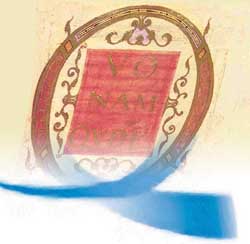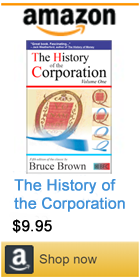Chapter Eight
LET ANY READER TRY, with Roman numerals, an ordinary multiplication or division sum of three digits on each side,” observed noted medievalist G.G. Coulton, “and he will at once [understand] the medieval powerlessness in the face of really large numbers.”
Medieval European business transactions were worked out by moving counters around on a large checkerboard called an excheqier. This is the origin of the English terms “exchequer” and “cheque,” and ultimately the ubiquitous American “check.”
Multiplication was carried out by a series of additions, and division by a series of subtractions. The method was horribly cumbersome, and hardly portable. It would be as if your 21st century pocket calculator was the size of the kitchen table, took 10 minutes to perform relatively simple calculations, and then produced incorrect answers some of the time.
Medieval Arab merchants and mathematicians didn’t have these problems, though. They were able to perform every type of math faster and easier than their European counterparts, thanks to the concept of zero and the decimal numeric system Europeans and Americans still call Arabic, but which the Arabs had learned in India. Their computations were more accurate too, since the decimal system allows easy checking of arithmetic by means of the reverse process (division to check multiplication, multiplication to check division, etc.).
Italian merchants like Leonardo Fibonacci immediately recognized the superiority of the Arabic system when they encountered it in negotiations with Moslem merchants. Fibonacci, whose Liber Abaci introduced medieval Europe to algebra in 1202, spent part of his youth in Algeria, where his father was the manager of a Pisan trade agency. He was enrolled with a Moslem teacher, and later traveled in Egypt and Syria studying commercial practices and learning to compute, as he himself recalled, “by a marvelous method through the nine figures of the Indians.”
The long-term effects of this discovery were huge. When the average European merchant couldn’t reliably handle numbers in the thousands, let alone solve second degree equations, it was impossible for European business to deal on a substantial scale. Knowledge of Arabic numerology gradually created the potential for more sizable commercial undertakings as it spread northward during the Middle Ages, but it did not bring them into being itself. The actual vehicle for large-scale European commerce developed out of another gift of Islam, the qirad contract. |
|
The History of the Corporation
|

Astonisher.com is pleased to present The History of the Corporation, Volume One by Bruce Brown.
Here is the Table of Contents for excerpts from the entire book, which covers 1,000 years from the birth of the first modern corporation through the the First Dominion of the corporation.
About the Author: Bruce Brown is the author of eight books, including Mountain in the Clouds, an environmental classic, and The Windows 95 Bug Collection, which was put on display in the Smithsonian Institution in Washington, DC.
He has done investigative reporting for the New York Times (the Karen Silkwood story), foreign correspondence for Atlantic Monthly (baseball in Cuba), and book reviews for the Washington Post Book World, as well as script-writing for PBS-TV (The Miracle Planet).
He is also a successful businessman and CEO, having created BugNet and built it into the world’s largest supplier of PC bug fixes before it was acquired by a Fortune 500 company at the height of the dot com boom.

|
|
|
The advantages of the qirad over contemporary European partnerships were numerous. First of all, it made possible more extensive pooling of funds for commercial ventures, which had an equally desirable secondary effect, namely spreading risk more widely. By investing in a number of qirad contracts, an individual merchant could spread his risk, much as a modern investor might by apportioning money between different types of securities. And since there was no guarantee of profit, the qirad circumvented the Islamic prohibition against usury, called sharisa.
Italian merchants may even have learned about the qirad in the same dockside conversations where the mysteries of the zero were revealed to them. The qirad was endemic to Arabic commerce, dating to pre-Islamic Mecca. Traditionally, Meccan merchants who failed in business starved themselves to death in the desert. Recognizing the toll that i'tifad, or ritual suicide of the bankrupt, had taken, an early sixth century leader, Hashim ibn 'Abd Manaf, proposed an alternative. Instead of suicide, he suggested the weak merchants pool their capital with the strong.
The resulting ilaf proved so successful that it catapulted Mecca to regional commercial leadership. The wealth and power of Mecca's merchants burgeoned, but prosperity brought problems for their rigid society. The tensions associated with this growth played a large part in the rise of Mohammed, who was also a member of the Hashim clan. Economically, Mohammed represented an accommodation with commercial success. A merchant himself, he accepted and legitimized clan-based commerce, although he did not specifically approve of either the ilaf, or qirad which evolved out of it.
The first mention of the qirad in Islam occurs in the Muwatta' of Malik ibn Anas, the oldest extant Islamic legal text, which was written sometime after 750 AD. Recognizing the qirad as an institution of the pre-Islamic jahilyan, or period of ignorance, Malik sought to establish its orthodoxy by describing its use by two illustrious early Moslem caliphs, 'Uthman and Umar, whose sons secretly entered into a qirad with tax money, and were forced by the caliph to pay half the proceeds to the treasury when they were discovered.
Combining elements of a loan and a partnership, the qirad was a contractual agreement between two parties, one providing the capital and the other the labor, for a mutual venture. Islamic law assigned the risk of loss to the financier, who also took the greatest share of the profits. The active agent might risk his life, of course, but the rewards for him were also substantial since it gave him access to commercial profits without capital of his own. According to Malik, there was no time limit on the contract. Accounts were settled whenever the venture was completed.
The practice evolved so that a qirad agreement could accommodate several investors in a single venture. In some instances, money was invested in qirad contracts on behalf of children to create something approximating a temporary, income producing trust. At other times, the qirad helped procreate, as well as provide, for children. Malik wrote of a case involving a man who took money from an investor in a qirad, and then used the proceeds to buy a slave girl, whom he impregnated.
The sophistication of Islamic commercial practices in general can be seen in the gold exchange which flourished in Tunisia during the early eleventh century, and later in the extensive distribution network of the Karimi Merchants. The Prophet's followers, however, would not allow their capital pooling devices to attain separate corporate identities. Although it effectively enabled Moslem merchants to operate as members of more than one “temporary family,” the qirad remained subservient to the clans which created it.
For centuries, Islamic merchants felt no loss in this regard, nor did their enterprises suffer. Members of the Fustat trading clans, for instance, could span the Mediterranean from Aden to Andalusia without ever leaving the family. They might at times enter into qirad contracts with other families or members of other faiths, but these contracts tended to be limited in scope and designed to achieve specific short term goals, such as obtaining European timber for Saharan caravan routes.
Although unconcerned with Umar or 'Uthman, the Europeans were as eager as their Moslem counterparts to cloak this fruitful heathen device in robes of utmost orthodoxy. When it first appeared in Italy in the tenth century, the qirad was commonly called commenda, borrowing from the Catholic Church's frequent practice of granting churches and monasteries in commendam. This was the sale of monastic revenues to non-monks, which Montalembert decried as the “leprosy of monasticism”...
"The History of the Corporation, Volume One" © Copyright 2003 Bruce Brown
Jacket illustration and design by Running Dog.
This is a free excerpt from The History of the Corporation by Bruce Brown.
The complete book is now available for Kindle on Amazon...

|
Key words from the remainder of Chapter 8 of
The History of the Corporation, Volume One
disguised loans
absentee ownership
capital pooling and risk diffusion
liability for loss of capital
Roman contract of mandate
Byzantine chreokoinonia
Jewish 'isqa
St. Augustine
Benvenuto da Imola
new man
Venice
Genoa
Giovanni Mauro di Carignano, rector of a church on Genoa's mole
Porchetto Spinola, Genoa's archbishop
1268
commenda per terram
Straits of Gibraltar
Genoese Benedetto Vivaldi in 1315
Venetian Giovanni Loredan in 1339
piracy
Shakespeare's The Merchant of Venice
Ansaldo Baialardo
Ingo da Volta, a prominent Genoese merchant in 1156
initial capital
August 3, 1158
societas maris contract
a single trading voyage, usually to the Levant, Africa, Spain, Provence or the Low Countries
mahonna or maone
super-corporation with temporary authority over an entire fleet
Genoese mercenaries Giacomo Barberi and Niccolo da Bisagno
Philip IV
mahonisti
Baeleric Isles
Sardinia
Corsica
Almiera andTortusa in Spain
Caffro
Fernand Braudel
Corsica
the mahonna of Leonello Lomellino
Bastia on the north coast of Corsica
that became the stronghold of Genoese power on the island.
Licostomo, the Genoese trading colony at the mouth of the Danube
a mahonna of twenty-four shares
gallnuts to lead
price fixing
the price of soap in fifteenth century London
island of Chios in the eastern Mediterranean
Moane di Scio
colonial government
great estate specializing in the production of mastic
varnish
alum
commercial cloth manufacture
the mines of Genoese Benedetto Zaccaria at Phocæa
Bruges
Pope Paul II
© Copyright 1973 - 2020 by Bruce Brown and BF Communications Inc.
Astonisher and Astonisher.com are trademarks of BF Communications Inc.
BF Communications Inc.
P.O. Box 393
Sumas, WA 98295 USA
(360) 927-3234
Website by Running Dog  |